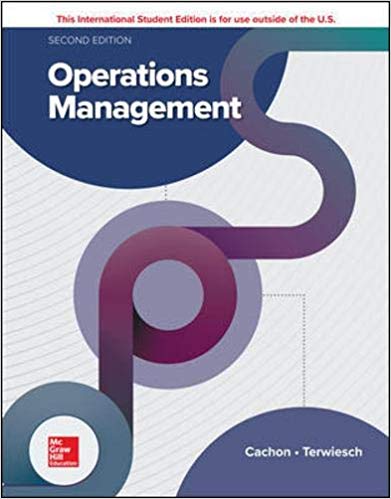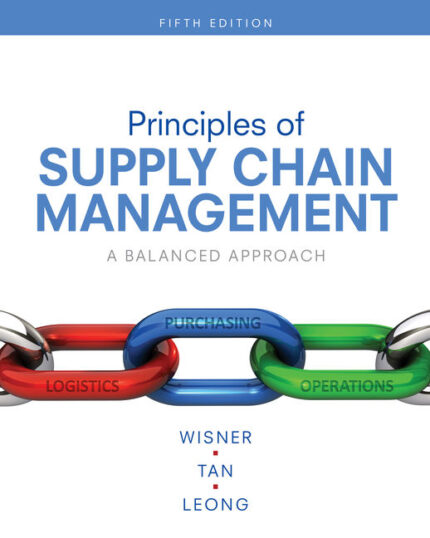Operations Management 2nd Edition By Gerard Cachon – Test Bank
Do you need test banks fast? eTestBank.net is the best test bank website for you! Download your test bank right after you pay. No waiting!
Why eTestBank.net is Great:
✅ Instant Download:
Get your test bank right away after payment.
✅ Unlimited Downloads:
Download your test bank anytime and as many times as you want.
✅ 24/7 Live Help:
We are here to help you all day, every day.
✅ Guaranteed Delivery:
If you don’t get the download right away, we will send it to you in 3 to 6 hours.
How to Get Your Test Bank:
- Pick Your Test Bank: Choose from many test banks.
- Pay Safely: Pay securely on eTestBank.net.
- Download Instantly: Get your test bank immediately after payment.
- Download Anytime: Unlimited downloads whenever you need them.
Need Help? Contact Us:
📧 Email: [Support@etestbank.net]
📱 WhatsApp: [https://wa.me/message/MC222DLQ4GDXL1r]
Didn’t Get Your Download?
Don’t worry! If you don’t get the file right away, we’ll send it to you in 3 to 6 hours. Need it sooner? Contact us by email or WhatsApp.
💡 Buy now from eTestBank.net for instant downloads, unlimited access, and 24/7 support—get your test bank today!
Operations Management, 2e (Cachon)
Chapter 5 Process Analysis with Multiple Flows
1) All flow units will have the same exit point in a production process.
Answer: FALSE
Explanation: Attrition loss is an example of when flow units exit the process before completion. Therefore, some flow units exit the process earlier than others.
Difficulty: 1 Easy
Topic: Generalized Process Flow Patterns
Learning Objective: 05-01 Compute the demand for a resource in the process of serving/producing a mix of customers/products.
Bloom’s: Remember
AACSB: Analytical Thinking
Accessibility: Keyboard Navigation; Screen Reader Compatible
2) A bottleneck resource must have an implied utilization of less than 100%.
Answer: FALSE
Explanation: An implied utilization of less than 100% simply means that the resource has the capacity to meet demand. It has no bearing on whether or not the resource is a bottleneck.
Difficulty: 2 Medium
Topic: How to Find the Bottleneck in a Process with Multiple Flows
Learning Objective: 05-02 Compute implied utilization to find the bottleneck in a general process flow.
Bloom’s: Understand
AACSB: Analytical Thinking
Accessibility: Keyboard Navigation; Screen Reader Compatible
3) The overall process yield is the sum total of the yields of all resources.
Answer: FALSE
Explanation: The overall process yield is the product of the yields of all resources.
Difficulty: 1 Easy
Topic: Attrition Losses, Yields, and Scrap Rates
Learning Objective: 05-04 Compute the yield of a process and be able to analyze a process flow with yield loss.
Bloom’s: Remember
AACSB: Analytical Thinking
Accessibility: Keyboard Navigation; Screen Reader Compatible
4) When analyzing a process flow with flow-dependent processing times, the unit of analysis should be a unit of demand.
Answer: FALSE
Explanation: When analyzing a process flow with flow-dependent processing times, the unit of analysis for a flow unit becomes a time unit, such as a number of minutes or hours of work.
Difficulty: 2 Medium
Topic: Flow Unit–Dependent Processing Times
Learning Objective: 05-03 Analyze a process with flow-dependent processing times.
Bloom’s: Understand
AACSB: Analytical Thinking
Accessibility: Keyboard Navigation; Screen Reader Compatible
5) Rework always lowers the process capacity.
Answer: FALSE
Explanation: Rework lowers the processing capacity only when it involves a bottleneck resource in restoring reworked units.
Difficulty: 3 Hard
Topic: Rework
Learning Objective: 05-05 Analyze a process with rework.
Bloom’s: Analyze
AACSB: Analytical Thinking
Accessibility: Keyboard Navigation; Screen Reader Compatible











